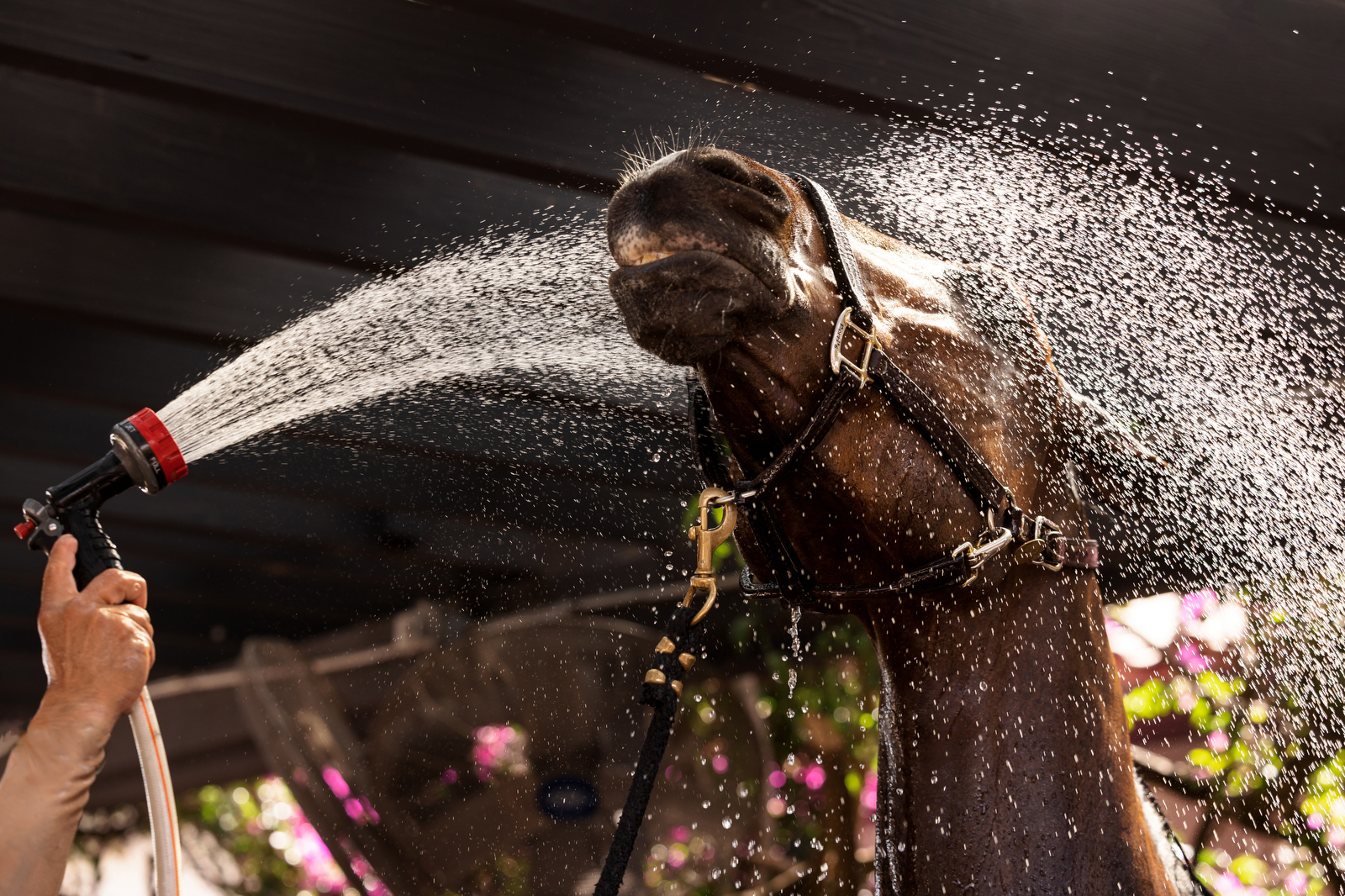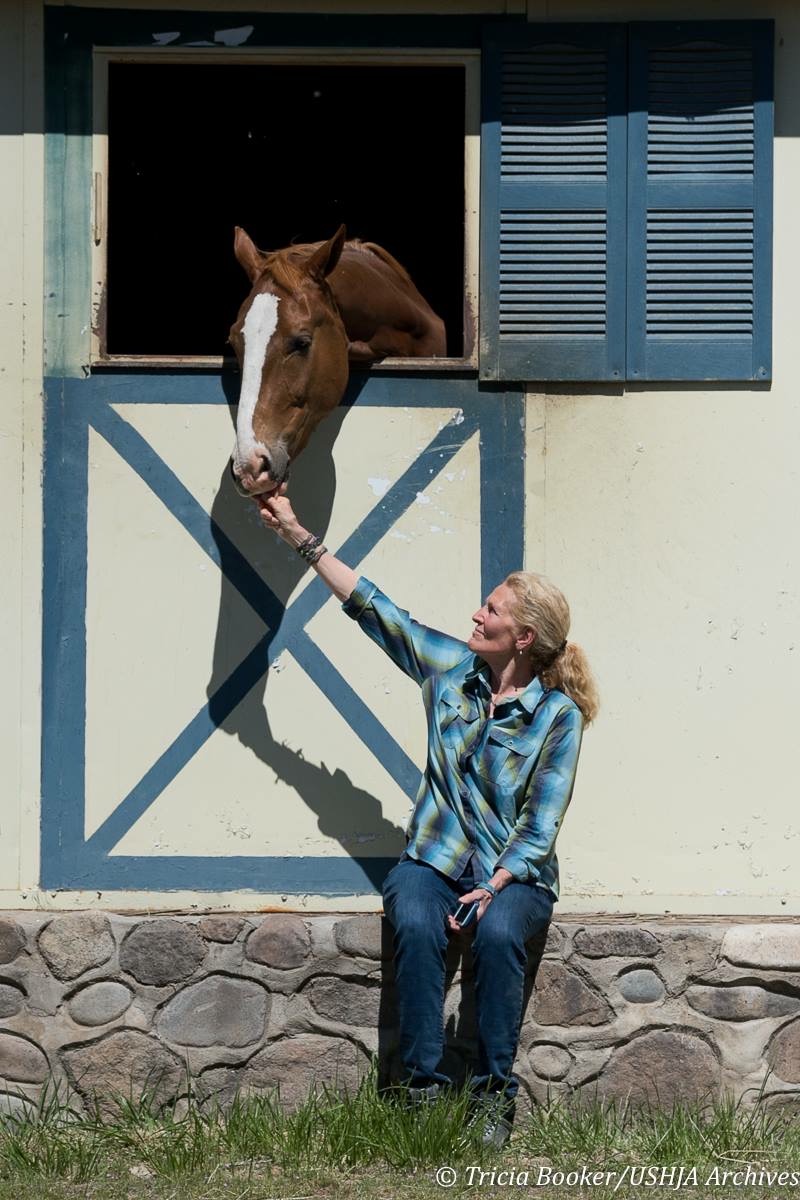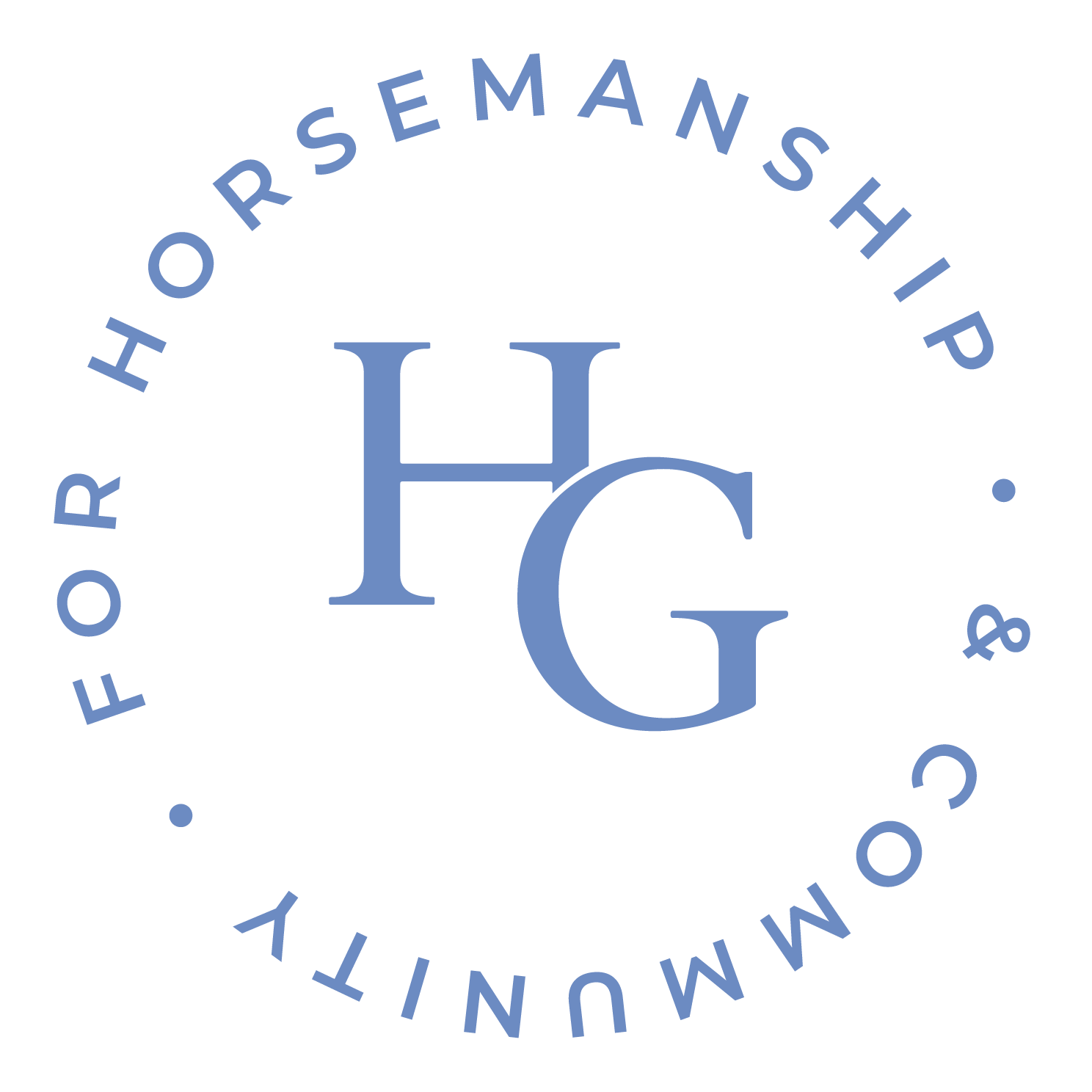At first glance, this lead photo is a stunning picture. The spray of water over the horse’s face catches the light perfectly.
On one level, there is beauty in this picture, but most people who work with horses will see something else.
HORSES DO NOT ENJOY BEING SPRAYED IN THE FACE!
Most of us have unintentionally gotten a few drops of water in a horse’s ear because they moved, and we know what a negative reaction you can get. They shake their head from side to side violently for a few seconds, trying to get the water out, and then that ear usually sits at a 90-degree angle for a minute or two. I don’t know exactly what they are feeling, but their reaction very clearly shows their discomfort.
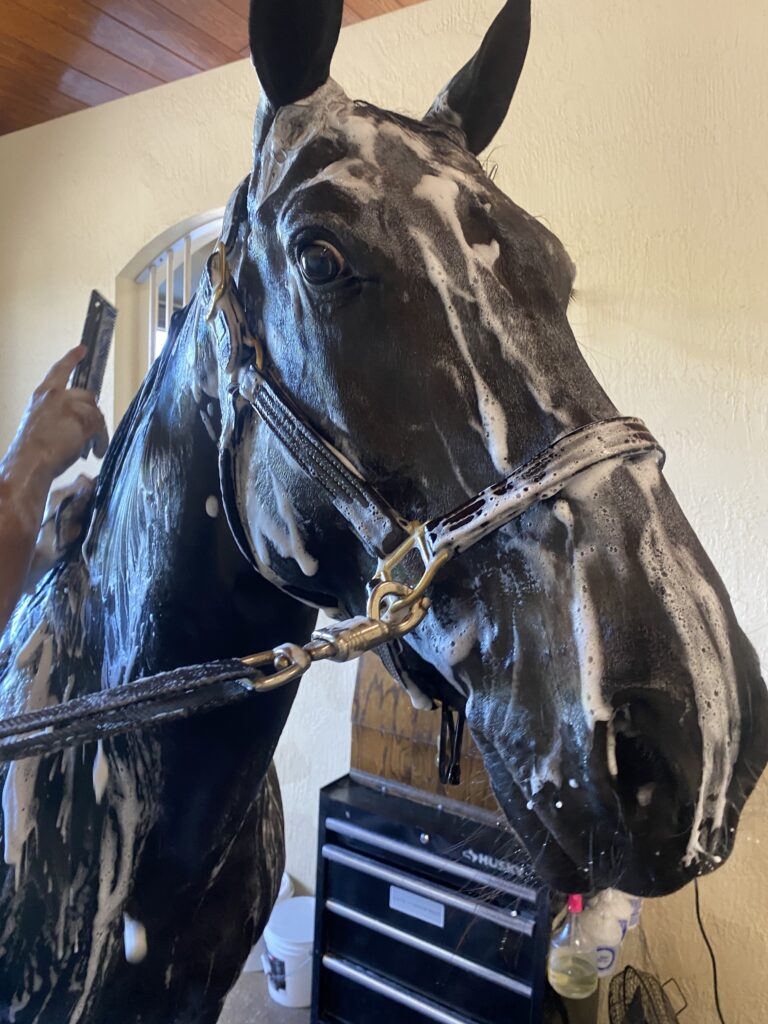
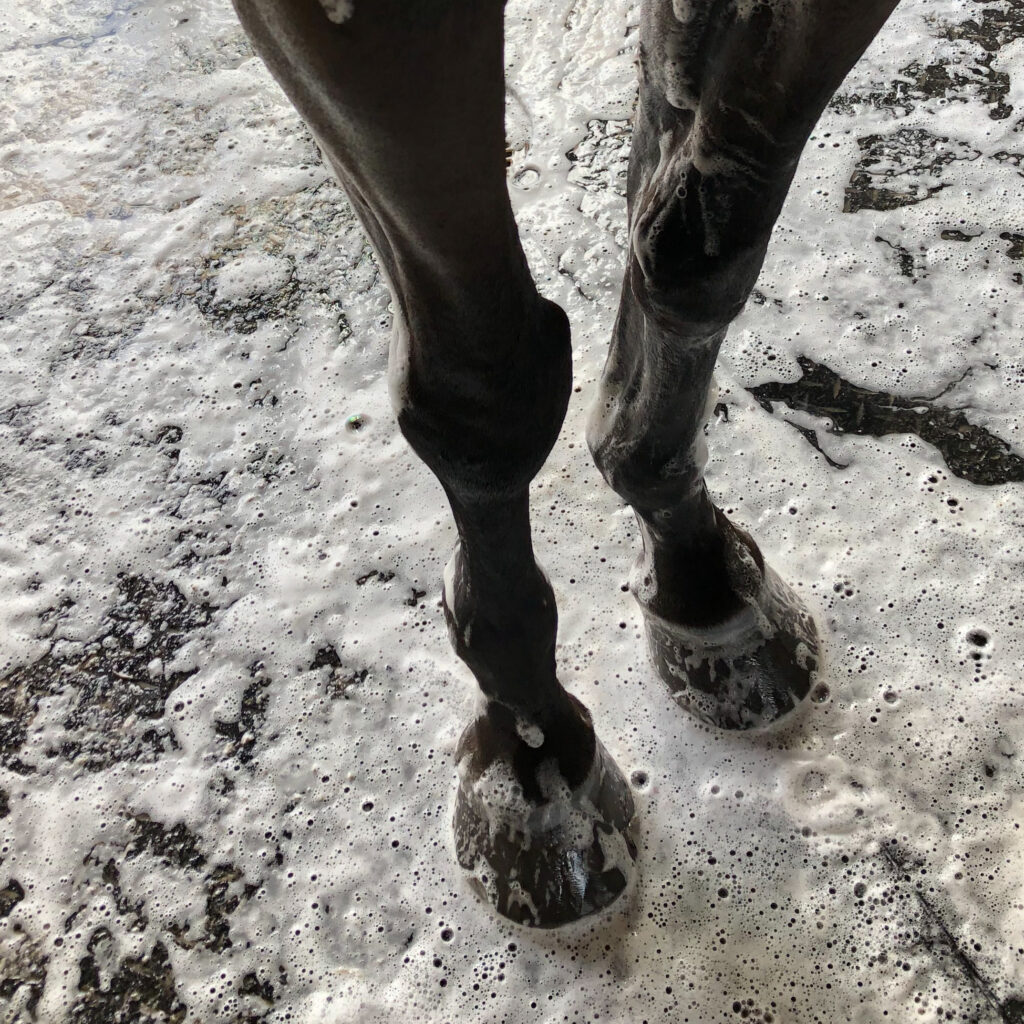
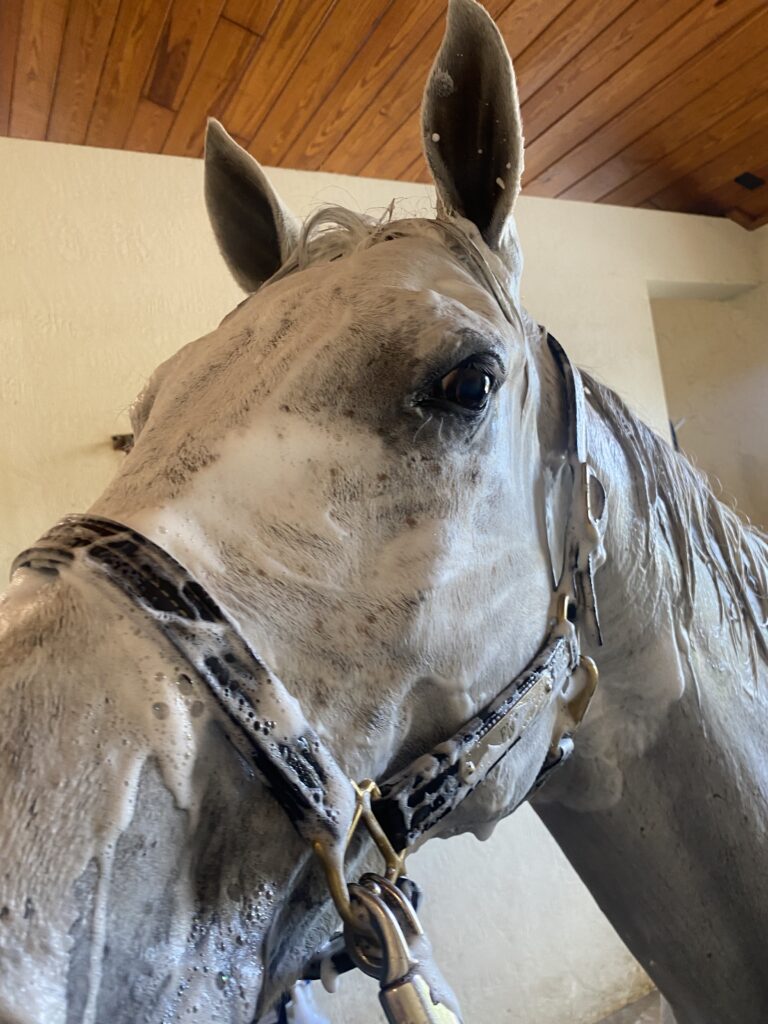
Try To Avoid Getting Water In A Horse’s Ear
As a groom, I always used a sponge – not a spray of water – to wash my horse’s face. Even then, I had to be careful not to get water in their ears. Most horses get a little tense when you reach up to wash their face. With a few horses, I even had to put the sponge down and use a small damp towel to wash off the sweat. This behavior makes me think they have had a bad experience in the wash stall.
So why are so many horses sprayed in the face by their grooms? My only guess is that the intention is to get their horse’s head really clean, and once all that soap is on, it has to come off…..
First, lathering a horse’s face isn’t really necessary. This horse will happily roll in a mud puddle or sleep on a pile of manure. Just because you have a bucket of soapy water, it doesn’t have to cover your horse from head to toe.
There Is Often a Middle Way
If you are really losing sleep over the little bit of dandruff in your horse’s forelock, there are a few things you can try.
- You can use just a tiny bit of soap, so it is easier to rinse out.
- If your horse is used to earplugs, you can use those at bath time. (Only as a precaution; not as a ticket to go ahead and spray them in the face.)
- With some practice, you can master “crimping” the hose, so you have better control of water flow and where it goes.
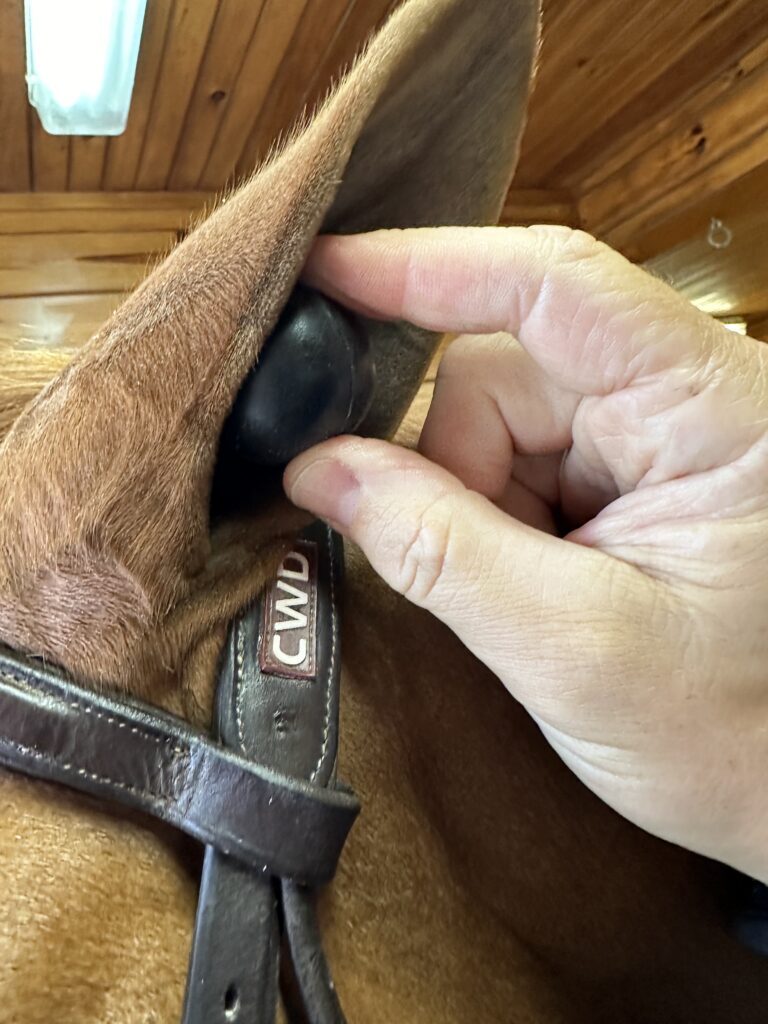
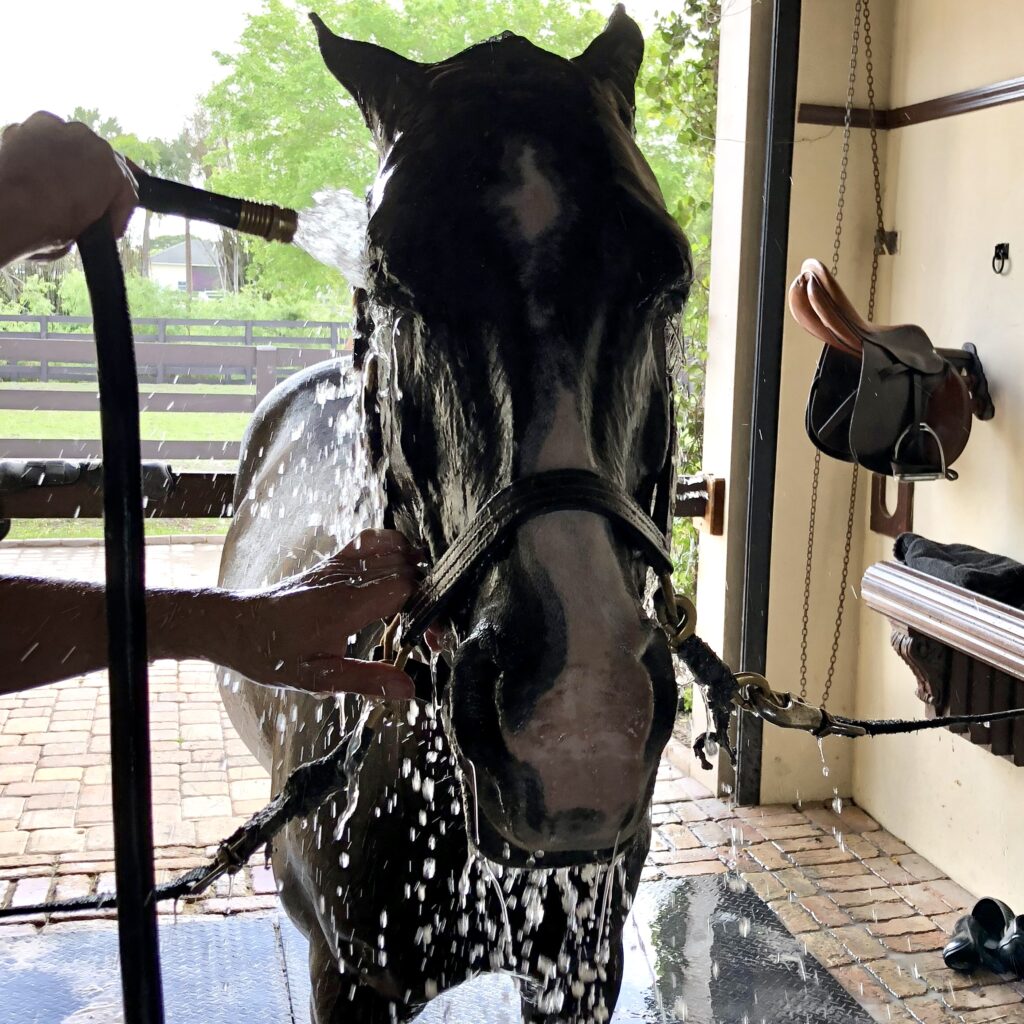

My take-home message: Listen to your horse, and if they tell you they don’t like something, then ask yourself: “How important is this? Is there a different way to do it? Is there a compromise?”
Can we teach empathy? I don’t know, but we all have to try.
Feature photo courtesy of Shelley Paulson Photography.
